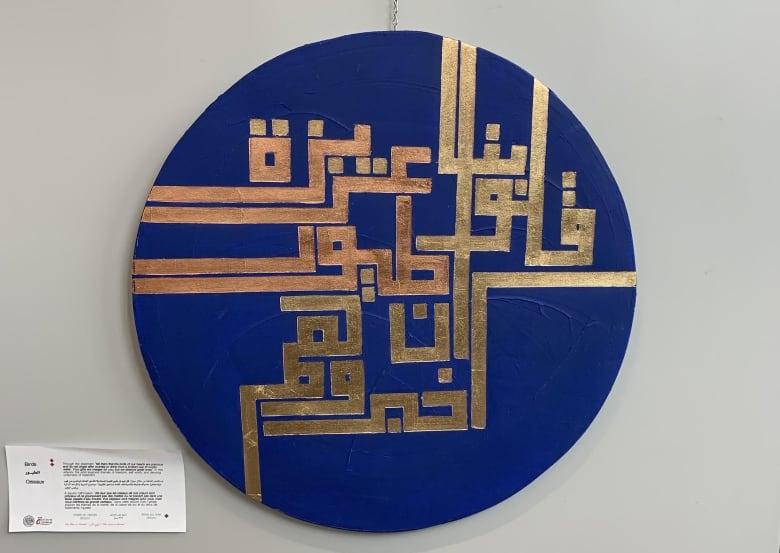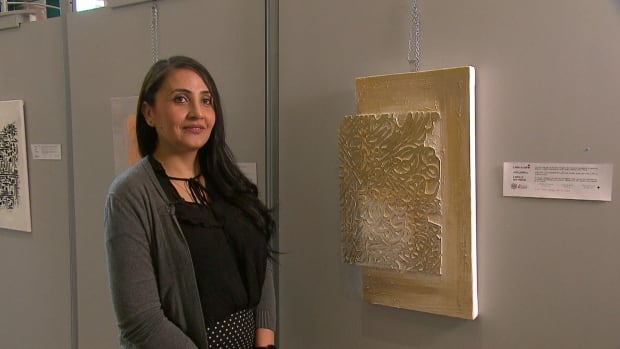Hala Ali was a teenager, living in a small city in her home country of Tunisia, when she first picked up a calligraphy pencil.
Inspired by a set of bamboo implements she received as a gift, she began learning the traditional art form.
“I fell in love with calligraphy when I was 13,” she said.
At first she developed her skills on her own, but Ali soon sought and completed formal training in the craft.
Arriving in Canada in 2012, she settled in New Brunswick four years ago, and has long looked forward to holding her first public exhibit in her new country. The response has been gratifying.
“When I was hanging the canvases, everybody was walking around and they were, like, saying, ‘oh it’s so beautiful. We don’t know what the message is,’ but they like how it looks.” said Ali.
Breaking conventions and community barriers
Ali explains that traditional calligraphy is based heavily on Qu’uranic statements.
But she wanted to make her art more inclusive to all backgrounds, so she tried “breaking conventions” by mixing the traditional with what she calls “free calligraphy.”
“If we take free calligraphy, we are free to create our own rules, how we want the shape of the letter to be, where we want to [place it]. It’s more an artistic view than following rules.”
Hala Ali fell in love with calligraphy as a teenager in Tunisia, her home country. She’s now launched her first public exhibition in Moncton, where she now lives.
Ali’s work is created using acrylic paint, plaster and sometimes gold foil, creating a textured canvas. She uses both calligraphy brushes and bamboo sticks — one of the oldest tools for calligraphy in the world.
While her work largely expresses and is inspired by her own personal struggles and emotions, for her the exhibit is more about connecting with the community through art.
“I want to transfer our values, how we see others, how we’re accepting of others,” Ali said.
“We’re not here to change anything — we are here to be together, and to be positive together and stronger than ever. And this is what I am trying to communicate.”

The pieces on display carry overarching themes of love, healing and valuing oneself.
The exhibit was put together through a partnership between the Arab Culture Club, a non-profit organization, and the Moncton Public Library.
Reem Fayyad, one of the founders of the club, says that art forms such as calligraphy work as community-building agents, forging connections where they wouldn’t otherwise exist.
“Regardless whether you understand the language or not, [calligraphy] is a beautiful thing to explore, just like music,” Fayyad said.
“Art in general can be a very good candidate to be built on and leverage — to force the links and to break barriers so that the rest of the community can get to know about you.

“There’s a hesitancy sometimes to learn about the new newcomers who come from certain backgrounds. There could be stereotypes as well. So what we’re leveraging here is that visual art is nice to look at and to explore.”
Ali has held exhibitions in Tunisia before moving to Canada. In the future, she hopes to bring her work to more libraries around the province and potentially teach the craft to aspiring artists.
The exhibit runs until the end of April.



